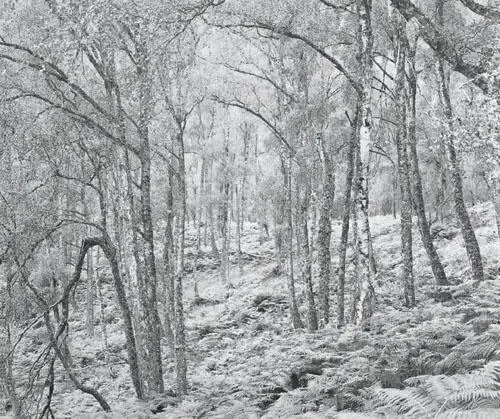Bruce Barnbaum - The Art of Photography - An Approach to Personal Expression
Здесь есть возможность читать онлайн «Bruce Barnbaum - The Art of Photography - An Approach to Personal Expression» весь текст электронной книги совершенно бесплатно (целиком полную версию без сокращений). В некоторых случаях можно слушать аудио, скачать через торрент в формате fb2 и присутствует краткое содержание. Жанр: Старинная литература, на английском языке. Описание произведения, (предисловие) а так же отзывы посетителей доступны на портале библиотеки ЛибКат.
- Название:The Art of Photography: An Approach to Personal Expression
- Автор:
- Жанр:
- Год:неизвестен
- ISBN:нет данных
- Рейтинг книги:5 / 5. Голосов: 1
-
Избранное:Добавить в избранное
- Отзывы:
-
Ваша оценка:
- 100
- 1
- 2
- 3
- 4
- 5
The Art of Photography: An Approach to Personal Expression: краткое содержание, описание и аннотация
Предлагаем к чтению аннотацию, описание, краткое содержание или предисловие (зависит от того, что написал сам автор книги «The Art of Photography: An Approach to Personal Expression»). Если вы не нашли необходимую информацию о книге — напишите в комментариях, мы постараемся отыскать её.
The Art of Photography: An Approach to Personal Expression — читать онлайн бесплатно полную книгу (весь текст) целиком
Ниже представлен текст книги, разбитый по страницам. Система сохранения места последней прочитанной страницы, позволяет с удобством читать онлайн бесплатно книгу «The Art of Photography: An Approach to Personal Expression», без необходимости каждый раз заново искать на чём Вы остановились. Поставьте закладку, и сможете в любой момент перейти на страницу, на которой закончили чтение.
Интервал:
Закладка:
In fact, that exact dichotomy was on full view when I co-instructed a workshop with Reed Thomas in 1986. Prior to that workshop, Reed and I spent several weekends photographing together in the Alabama Hills, the immense rock-strewn landscape below Mt. Whitney in the Sierra Nevada Mountains. Prior to that, each of us had photographed that area individually and extensively over several years. My photographs were dominated by deep tonalities and bright highlights, while Reed’s were characterized by softer contrasts and lighter tonalities. I focused on the boulders themselves, while Reed focused on the vast fields of boulders, seemingly spreading forever (Figure 17-1 and Figure 17-2).
Reed and I decided to open the workshop in an unusual way: we each placed 10 of our photographs in a stack and then simultaneously showed them one at a time. By the time we got to the eighth print, one of the students cried out, “OK, I see how Bruce sees this place and I see how Reed sees this place, but what does it really look like?” That was the perfect question. To me, it looked like my prints; to Reed, it looked like his prints. Both were valid interpretations. Both were correct. Yet they were starkly different. Each of us had our own vision, and we both followed our vision—our intuition. In essence, as we walked through the boulder fields I photographed the boulders; Reed photographed the fields. Inevitably, the students would have to see how the Alabama Hills looked through their own eyes.
The key idea here is that both Reed and I had a very definite vision of how we saw the region. Both of us were deeply involved, deeply interested in the place. It’s a truly awesome area. We would walk together at times, and diverge in different directions at other times, each of us pursuing our own personal vision. Each of our photographs was consistent with the others we produced. Neither of us forced our vision. It was simply how we each saw that landscape.

Reed Thomas was also attracted to the Alabama Hills, but he interpreted the area in a completely different way. While I was drawn to the boulders in bold, contrasty images, Reed was drawn to the fields with quiet, subtle mid-tones. The differences were made even more evident as Reed applied a light sepia-type toning to his images (compare Figure 17-1). Both visions were deeply felt. Both are truthful and valid. Both say something personal about the area .
Figure 17-2. Fields, Alabama Hills (photograph courtesy of Reed Thomas)
On another occasion, while scouting for a workshop in northern Scotland, I was in the beautiful valley of Glen Affric. Looking from a hillside into a forest of birch trees and tall bracken ferns, I set up my camera. The scene appeared bright and airy to me, and I wanted to convey that feeling. Ian Biggar, a good friend who had assisted me on several previous workshops, was with me when I stopped to take that picture and looked through the camera when I composed the image. So he not only saw the same scene, he saw my exact composition.
After the workshop group spent a day in Glen Affric, I showed that photograph (Figure 17-3). Ian leapt out of his seat (quite literally!) asking, “How did you do that?” I looked at him blankly, failing to comprehend the question. After all, he had already seen the composition in the field. What was it that he was asking? I was clueless. It turned out that the tonalities of my image surprised him. I had instinctively made the exposure by exposing the average tonality at Zone 7, quite high on the scale. I did so without thinking much about it. Everything looked bright and airy to me. I would have guessed that everyone would have seen it that way, since it was intuitive to me! In my mind it was not just the obvious way to see it; it was the only way.
Ian apparently saw the scene as an average Zone 5. So in his mind, the image would have been much darker. I finally understood his confusion when he asked if I had used infrared film. I hadn’t. The negative was exposed on Kodak Tri-X panchromatic film. Infrared tends to lighten foliage, especially foliage in sunlight. I realized that the creative aspect of this photograph was my initial intuitive seeing of the scene as quite bright. Ian’s question about infrared cleared things up for me; he was simply surprised by how bright the image was.

While scouting for a workshop in Scotland in 1998, I came across this scene, looking steeply downhill through a forest of birch trees and a floor of dense bracken ferns. On a brightly lit day with thin, high, overcast skies I saw the nearly white tree trunks and ferns as overwhelmingly luminous. Placing the average reading in Zone 7 (very light gray), I photographed the lovely scene as I envisioned it, thinking that everyone would see it that way. Evidently not. A close friend standing beside me when I made the photograph was utterly astounded by the light tonalities when he saw the final print a year later, unable to determine what I had done to achieve it .
Figure 17-3. Birch and Bracken, Glen Affric
Most people see forests—even birch forests with near-white trunks—as mid-toned or dark-toned places. I tend to see forests as luminous places. I am influenced by my love of forests. I live in a forest of large, tall conifer trees in Washington State, and I revel in its light.
So the intuition, the creativity, the insight was in my seeing the forest as bright and glowing, not dark. This could only have come from a deep interest in such natural areas, despite the fact that I had never previously been to this particular area. Intuition doesn’t come out of nothing. It needs deep involvement, interest, and understanding to gain a foothold.
My deepest and strongest involvement leading to intuitive insight was my reaction upon first entering Antelope Canyon (the first slit canyon I encountered), which I instantly saw as force fields rather than eroded sandstone walls. It wasn’t something I thought about and concluded; it hit me spontaneously and instantly. No thinking was involved. It was an immediate reaction, like ducking away from a ball coming at your head. The only difference between the two was that my reaction to the canyons came out of my lifelong interest in physics. This is where I believe most people misinterpret the concept of intuition. They think that intuition is simply there, like an indefinable asset that’s with you at all times, and you just need to tap into it. That’s not what it is. Intuition is a product of deep interest, understanding, and long involvement.
Some people are intuitive in understanding and “reading” others. Most of us are not very good at it. Those who are good at it have probably been (consciously or subconsciously) students of human behavior all their lives. They are deeply interested in how people respond to a variety of circumstances, they observe people in unusual detail, and in time they intuitively recognize how people will respond to new circumstances. Such people don’t gain their insights out of nowhere, but rather from hours of carefully observing human behavior. In time, they become experts at it.
Applying Intuition to Your Photography
The idea of using intuition that I’m considering here has something to do with photography, but much more to do with life...your life. You likely have a deep interest in many things. In fact, you’re undoubtedly quite knowledgeable about many subjects. You may even have reached the expert level in some things without even realizing it; and you might not accept that as fact even if it were pointed out to you.
Читать дальшеИнтервал:
Закладка:
Похожие книги на «The Art of Photography: An Approach to Personal Expression»
Представляем Вашему вниманию похожие книги на «The Art of Photography: An Approach to Personal Expression» списком для выбора. Мы отобрали схожую по названию и смыслу литературу в надежде предоставить читателям больше вариантов отыскать новые, интересные, ещё непрочитанные произведения.
Обсуждение, отзывы о книге «The Art of Photography: An Approach to Personal Expression» и просто собственные мнения читателей. Оставьте ваши комментарии, напишите, что Вы думаете о произведении, его смысле или главных героях. Укажите что конкретно понравилось, а что нет, и почему Вы так считаете.












